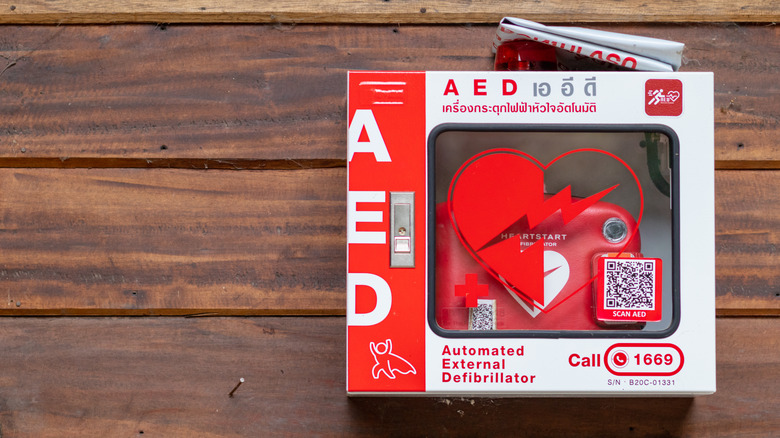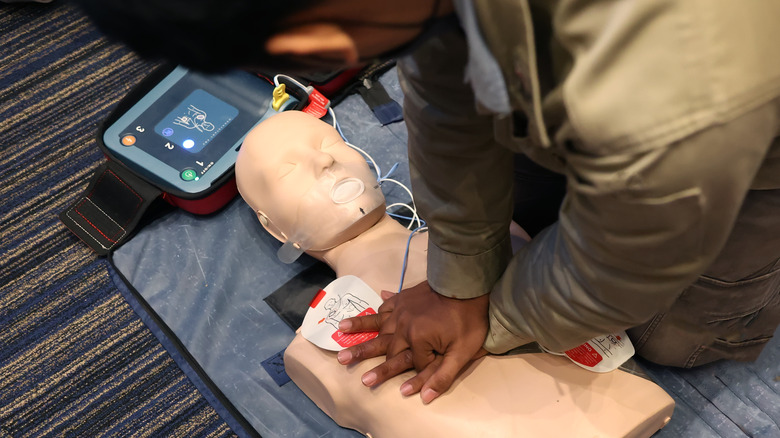How Defibrillators Really Work
Even if you've never actually used one, chances are you've seen Automated External Defibrillators (AED) around. In some states, they are mandated to be located in state buildings, schools, and other facilities, and many organizations have one or more onsite even without being required (via heartsmart). An AED is a medical device that monitors a person's heartbeat, detecting one of two conditions: ventricular fibrillation, in which the heart receives disorganized electrical signals, causing the lower chambers (or ventricles) to "quiver" instead of contract effectively, or ventricular tachycardia, in which the heart beats dangerously fast (via WebMD). Both of these conditions prevent the heart from effectively pumping oxygenated blood throughout the body and can lead to a heart attack.
If an AED detects either of these conditions, it will deliver a sudden electrical shock to the heart through the chest. This "resets" the electrical system of the whole heart, allowing it to return to normal electrical activity (via Cardio Partners). The AED then continues to monitor the heart rate and may advise for another shock to be applied if a normal heart rate hasn't been restored.
AEDs can and do save lives each year
What makes AEDs so valuable is that they are designed to be easily used by non-medical personnel. The computerized device gives audible, easy-to-follow step-by-step instructions on what to do, allowing untrained bystanders to quickly intervene if someone close to them seems to be going into cardiac arrest. The average time for an early responder to arrive after calling 911 is between eight and 12 minutes. The chance of survival decreases by 10% with each minute that passes without the use of CPR or an AED. These devices allow for immediate help to be given, and can and do save lives (via American Red Cross).
Sudden cardiac arrest is one of the leading causes of death in the US, claiming 350,000 lives each year. The quick use of AEDs, combined with correctly-administered CPR, are the best tools we have to save these lives.


